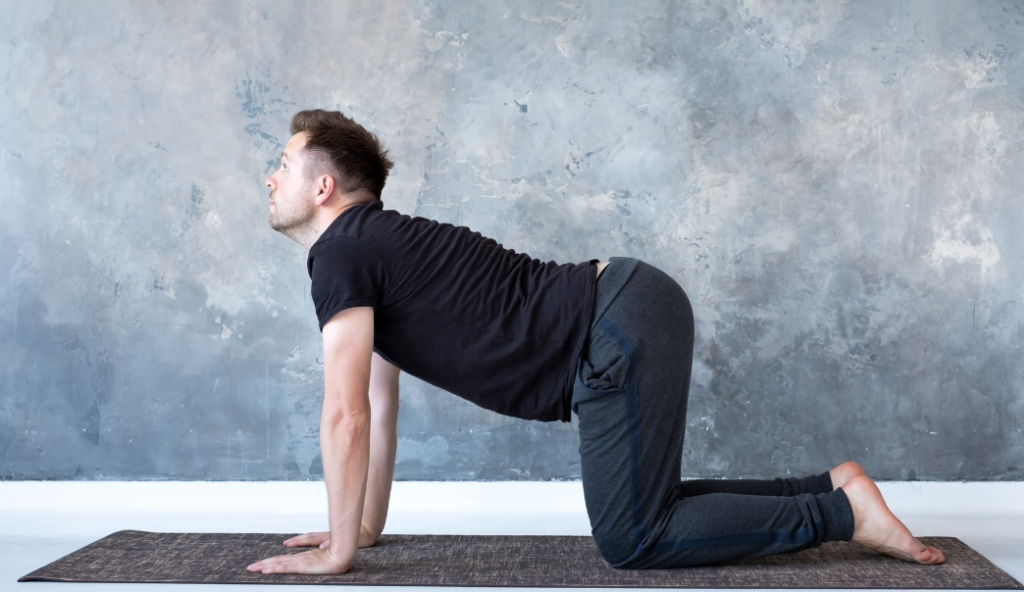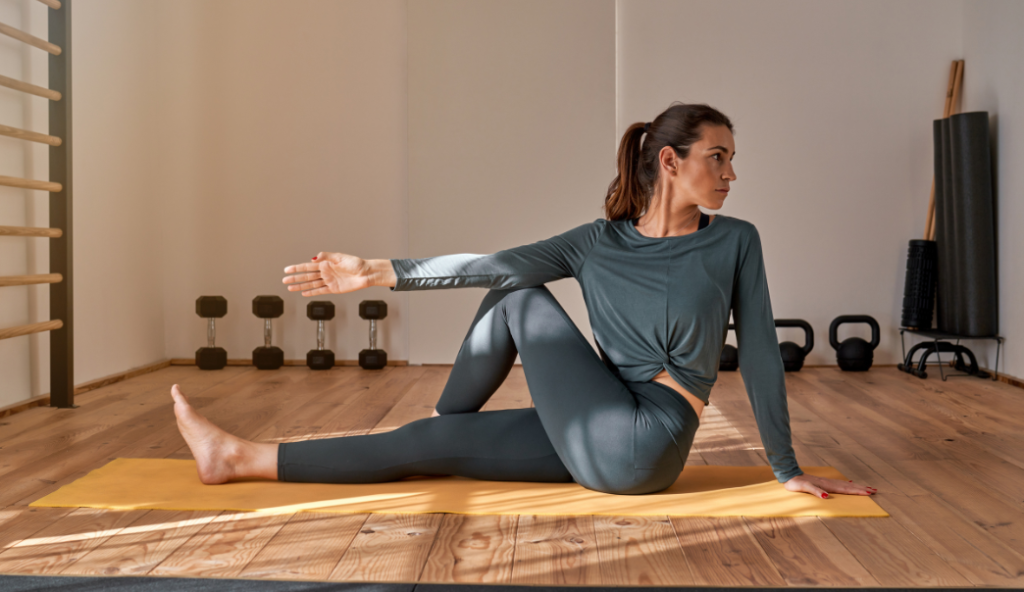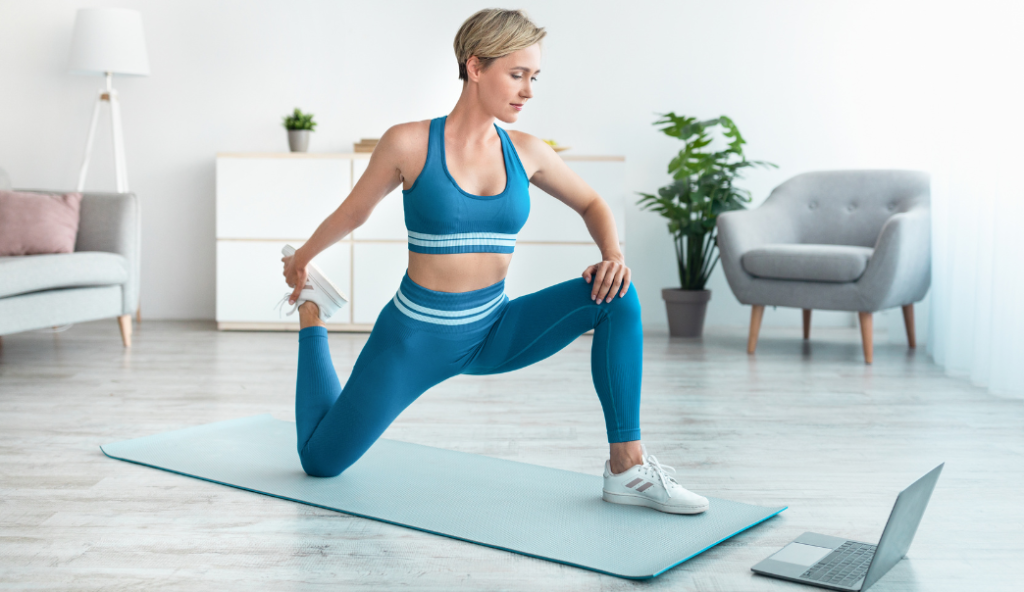Are you tired of dealing with constant lower back pain? Don’t worry; some stretches can help alleviate the discomfort and relieve you. In this article, we will explore various stretches that target the muscles in your lower back, helping to reduce pain and stiffness. So, let’s dive in and discover the stretches that can make a real difference in your daily life.
The Importance of Stretching to Relieve Lower Back Pain
Stretching is an essential component of any back pain relief routine. When you stretch, you help improve your muscles’ flexibility and range of motion, enabling them to relax and recover. Additionally, stretching increases blood flow to the muscles, which can help reduce inflammation and promote healing. Incorporating these stretches into your daily routine can significantly relieve lower back pain.
Back pain is a common ailment that affects millions of people worldwide. Various factors, including muscle strain, poor posture, and a sedentary lifestyle, can cause it. Regardless of the cause, stretching is a simple and effective way to alleviate back pain and prevent future episodes.
The Role of Stretch 1: Cat-Cow Pose
The Cat-Cow Pose is a fantastic stretch to release tension in your lower back. Start on all fours, with your hands directly beneath your shoulders and your knees hip-distance apart. Inhale and arch your back, letting your belly drop while lifting your head. This is the Cow position. Exhale and round your back, pulling your belly button towards your spine and tucking your chin. This is the Cat position. Repeat this flow for a few minutes, focusing on the gentle movement and stretching sensation.
As you move through the Cat-Cow Pose, you may notice a sense of relief as the stretch targets the muscles along your spine. This stretch helps alleviate lower back pain, improves posture, and strengthens the core muscles.

Stretch 2: Child’s Pose
The Child’s Pose is perfect for you if you’re looking for a gentle stretch that targets your lower back. Begin on your hands and knees, then slowly sit back on your heels, extending your arms forward. Relax your forehead on the mat or the floor as you allow your back to lengthen and stretch. Breathe deeply, sinking deeper into the pose with each exhale. Stay in this position for a few minutes, feeling the tension melt away from your lower back.
The Child’s Pose is an excellent stretch for the lower back and a calming pose that promotes relaxation and stress relief. It gently stretches the hips, thighs, and ankles, providing a full-body release.
Stretch 3: Pelvic Tilt
The Pelvic Tilt stretch targets the muscles in your lower back and core. Start by lying on your back with your knees bent and your feet flat. Slowly tilt your pelvis upward, pressing your lower back into the floor. Hold for a few seconds, then release and allow your lower back to return to its natural arch. Repeat this movement several times, focusing on the controlled contraction and release of your abdominal muscles.
By performing the Pelvic Tilt stretch regularly, you can strengthen your core muscles and improve the stability of your lower back. This stretch also helps alleviate tightness in the hip flexors, which can contribute to back pain.
Stretch 4: Knee-to-Chest Stretch
Another effective stretch for lower back pain is the Knee-to-Chest stretch. Begin by lying on your back with your knees bent and your feet flat. Slowly bring one knee towards your chest, using your hands to pull it closer, if needed gently. Hold the stretch for 10-20 seconds, feeling the gentle pull in your lower back. Release and switch sides, repeating the stretch with your other leg. This stretch helps elongate and stretch the muscles in your lower back, relieving discomfort.
The Knee-to-Chest stretch targets the lower back and stretches the glutes and hips. It can help improve flexibility in the hip joints and alleviate tightness in the lower body.
Stretch 5: Seated Spinal Twist
The Seated Spinal Twist is a stretch that targets the muscles along your spine, including the lower back. Begin by sitting on the floor with your legs extended in front of you. Bend your right knee and place your right foot outside your left thigh. Place your left elbow outside your right knee and gently twist your torso towards the right. Hold the stretch for 15-30 seconds, feeling the gentle rotation in your lower back. Release and switch sides, repeating the stretch on the other side to maintain balance in your spine.
The sed spinal twist helps relieve lower back pain and improves spinal mobility and flexibility. It stretches the back, hips, and shoulder muscles, promoting overall spinal health.

Stretch 6: Piriformis Stretch
The Piriformis stretch is vital for those experiencing lower back pain due to tight hips and glutes. Start by lying on your back with both knees bent and your feet flat. Cross your right ankle over your left thigh, just above the knee. Reach through and clasp your left thigh, pulling it towards your chest until you feel a gentle stretch in your right glute. Hold for 20-30 seconds, then release and repeat on the other side. This stretch helps relieve tension in the piriformis muscle, which can often contribute to lower back pain.
The Piriformis stretch targets the piriformis muscle and stretches the glutes and hip rotators. It can help improve hip mobility and reduce the risk of lower back pain caused by tightness in the hip area.
Stretch 7: Hamstring Stretch
Tight hamstrings can strain your lower back, leading to pain and discomfort. Start sitting on the ground with your legs extended to stretch your hamstrings effectively. Bend one knee and place the sole of your foot against the opposite leg’s inner thigh. Gently lean forward and reach towards your foot, keeping your back straight. Feel the stretch in the back of your leg and hold for 20-30 seconds. Release and switch sides, repeating the stretch on the other leg.
The Hamstring stretch targets the hamstrings and stretches the calves and lower back. It can help improve flexibility in the posterior chain and alleviate tension in the lower body.
Stretch 8: Hip Flexor Stretch
The hip flexor muscles at the front of your hip can become tight and contribute to lower back pain. To stretch your hip flexors, kneel on one knee with the other foot in front of you, ensuring your knee is directly above your ankle. Slowly lean forward, feeling the stretch in the front of your hip and thigh. Hold for 20-30 seconds, then switch sides and repeat the stretch on the other leg. Regularly stretching your hip flexors can help alleviate lower back pain and improve overall flexibility.
The Hip Flexor stretch targets the hip flexor muscles, stretches the quadriceps, and improves hip mobility. It can help correct postural imbalances and reduce the risk of lower back pain caused by tight hip flexors.

Stretch 9: Lower Back Stretch
Ending our list of stretches is a simple yet effective lower back stretch. Lie on your back with both knees bent and feet flat on the ground. Bring both knees towards your chest, using your hands to pull them closer if needed. Feel the gentle stretch in your lower back and hold for 20-30 seconds. Release and repeat the stretch for a few more rounds, allowing your lower back muscles to relax and unwind. This stretch is ideal for releasing tension and promoting a healthy range of motion in your lower back.
The Lower Back stretch targets the muscles in the lower back and helps alleviate tightness and discomfort. It can be particularly beneficial after prolonged periods of sitting or physical activity.
Tips for Safe Stretching
Stretching is not only a great way to relieve lower back pain, but it also offers numerous benefits for your overall well-being. Incorporating these tips into your stretching routine can ensure your safety and maximize the advantages.
First and foremost, it is crucial to listen to your body. While a gentle pull or slight discomfort is expected during a stretch, it is essential to never push through sharp or intense pain. Your body has its limits, and it is crucial to respect them if you feel any sharp pain, back off immediately and try a modified version of the stretch that feels more comfortable.
Warming up your muscles before stretching is highly recommended. Light activity, such as brisk walking or jogging, increases blood flow to your muscles and prepares your body for movement. This warm-up period not only helps prevent injuries but also enhances the effectiveness of your stretching routine.
Furthermore, breathing deeply and relaxing during each stretch is key. As you inhale deeply, imagine your breath flowing into the specific muscle group you target. As you exhale, visualize any tension or tightness leaving your body. By consciously relaxing your muscles, you allow them to release tension and improve flexibility more effectively.
Moreover, it is essential to understand that stretching is not a one-size-fits-all practice. Each person’s body is unique, and what works for one individual may not work for another. Therefore, exploring different stretching techniques and finding the ones that work best for you is crucial. Experiment with stretches, such as static, dynamic, or proprioceptive neuromuscular facilitation (PNF) stretching, to discover what feels most beneficial and comfortable for your body.
Incorporating a variety of stretches into your routine can help target different muscle groups and prevent muscle imbalances. Focusing on both major muscle groups and smaller stabilizing muscles can improve your overall flexibility and reduce the risk of injuries.
Lastly, consistency is vital when it comes to stretching. While a single stretching session can temporarily relieve, regular stretching over time yields more significant and long-lasting benefits. Aim to incorporate stretching into your daily routine, whether it’s a few minutes in the morning or a dedicated stretching session before or after exercise. By making stretching a habit, you can experience improved flexibility, reduced muscle soreness, and enhanced performance in various physical activities.
Following these tips for safe stretching can ensure your safety, maximize the benefits, and help you enjoy a more flexible and pain-free body. Listen to your body, warm up before stretching, breathe deeply and relax, explore different stretching techniques, target various muscle groups, and maintain consistency. With these practices, you can maximize your stretching routine and enhance your overall well-being.
When to Consult a Chiropractor for Back Pain
If you’ve been experiencing chronic or severe lower back pain that doesn’t improve with stretching or other home remedies, it may be time to consult a chiropractor. Chiropractors are trained professionals who can assess the root cause of your pain and provide treatments specifically tailored to your needs.
They can use spinal adjustments, mobilization, and therapeutic exercises to help alleviate lower back pain and restore proper function. If you’re unsure whether a chiropractor can help you, don’t hesitate to schedule a consultation and discuss your symptoms and treatment options.
Incorporating regular stretches into your routine can be incredibly beneficial for relieving lower back pain. The stretches mentioned in this article target the muscles in your lower back and provide much-needed relief.
Whether you choose the Cat-Cow Pose, the Child’s Pose, or any other stretch from this list, listen to your body and adjust the intensity of the stretches to suit your needs. Remember, relief is within reach, and by dedicating a few minutes each day to stretching, you can take significant steps towards a pain-free lower back.



